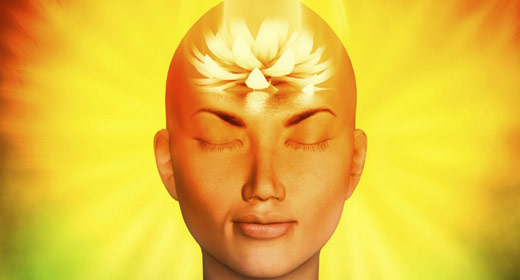| Read Part I here |
Mandukya Upanishad itself and the explanations on the original text, explanations on the explanations over some thirty centuries did a tremendously meticulous job of understanding these states of human consciousness. The waker state is aptly named the “Viswa”, the dreamer state is named “Taijasa” and the deep sleep state “Prajna”.
Then there is “Prajna” of the blissful state, where consciousness goes into the seed form, shutting down the experience of the experience.
The existence of the three also would have to logically depend on a fourth entity, which would hold these three independent states together. The entity that encompasses all three states to witness the coming and going by, like a silent witness. Just like a person who acts as an executive in the office, a father in the home while playing with children, a loving husband inside the bedroom – all these are nothing but different roles played by the same person. Likewise, “Viswa”, “Taijasa” & “Prajna” are the different forms assumed by the same witness pervading all three. This witness is called the “Turiyam” or the fourth.
---
Ancient texts also detailed a great deal about the nature of truth (or existence), it never terms “mithya” as un-truth, and rather it defines the boundaries of truth by levels. The levels are defined based on the degree of permanence of the plane where the truth exists. The things one sees in dreams can only be falsified because of the presence of an awake state which is relatively more permanent in nature - you wake up every day in the same reality, while your dreams mostly change every night. However the "Vishwa" state of consciousness is also not permanent, it gets replaced by the dream sphere in "Taijasa" and it absent in "Prajna" states.
"Turiyam" in that sense is the most permanent, as it encompasses all three as the witness. So the existential plane of "Turiyam" is called the absolute plane. Like in comparison to "Vishwa" in the transactional plane, the "Taijasa" gets falsified, when compared to this "Turiyam" in the absolute plane, even "Vishwa" gets falsified. Exactly here comes the concept of "Maya", the grand illusion, where exists the universe experienced by us in awake state.
I heard an interesting metaphor once, which spoke about the process of movie projection, three shows in a day might show different movies – it’s the screen however that remains in the background on which they are projected. When the movie is on, the screen is not visible to the viewers, in fact, for a first-timer, it’s hard even to appreciate the presence of the screen behind all those dramatic scenes and sequences on it. The screen is visible to naked eyes only when the projection is off. What is truer in this case ? of course, the screen as movies come and go, but the screen remains. Turiyam is like that movie screen, on which “Vishwa” is projected in the awake state, “Taijasa” in the dream state, and any projection is absent in the deep sleep state.
The elegant “Mandukya Upanishad” eloquently describes this metaphysical absolute as,
“न अन्तः प्रज्ञम् न बहिस् प्रज्ञम् न उभयतः प्रज्ञम् न प्रज्ञानघनम् न प्रज्ञम् न अप्रज्ञम् ।
अदृष्टम् अव्यवहार्यम् अग्राह्यम् अलक्षणम् अचिन्त्यम् अव्यपदेश्यम् एक आत्म प्रत्यय सारम् प्र पञ्च उपशमम् शान्तम् शिवम् अद्वैतम् चतुर्थम् मन्यन्ते स आत्मा स विज्ञेयः”
Translation: Neither inward knowable nor outward; not knowable from both ways. Neither unknown, nor knowable, nor unknowable. Invisible, non-interact-able, incomprehensible, not having any characteristics, inconceivable, non-mentionable, the substance of the conception of the single self, endpoint (of all), peaceful, auspicious, non-dual, deemed as fourth, he is self (Atma), he is to be known.
Experientially, the Turiyam can be thought immediately as the continued ‘I’ cognition that cuts across all three experienced forms of consciousness, it is 'I' who dreamt, it is 'I' who ate, went to the office even its 'I' who slept – that is where it is identified with the self in reality. So you may be Mr. X in your waking state, you may be Harry Potter or Superman in your dreams – the claim is of the existence of an ‘I’ who is there to experience Mr. X, Harry Potter, Superman etc in different states of consciousness, “Turiyam” is that, existing in the notional absolute plain, where reality truly exists.
What happens when “Turiyam” is known? One starts appreciating the presence of the absolute plain and a self beyond the awake state. All that happens in the world around in the awake state, good or bad is understood as less true & impermanent. The way you laugh at the nightmare you wake up from all scared and nervous to realize it was just an illusion; the ups and downs of real-world are taken in the same spirit as just another illusion (though a bit more stable), by the person who realizes the real self, called “Turiyam” and its absolute existence.
To be continued ...
~Avirup Chakraborty



0 Comments